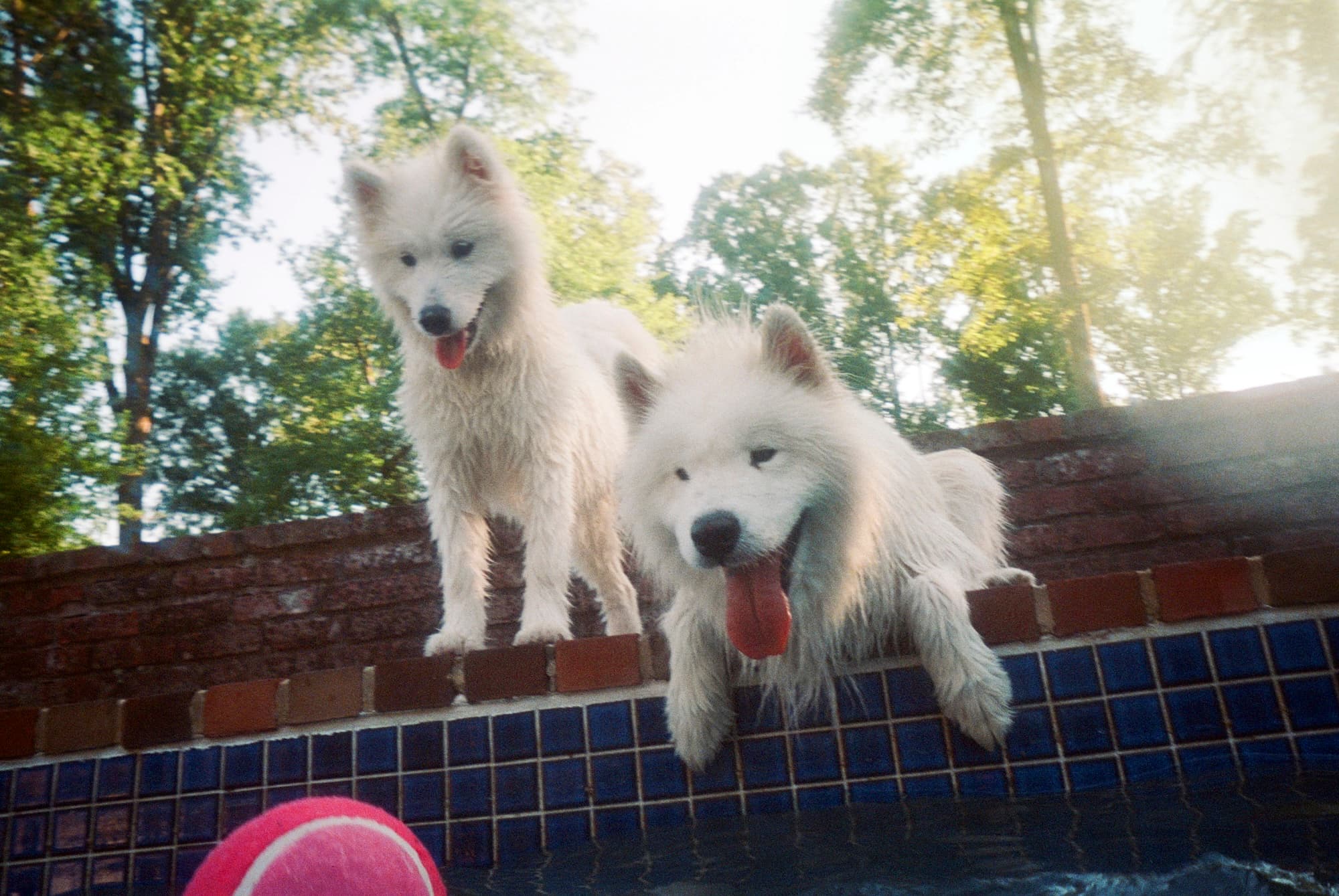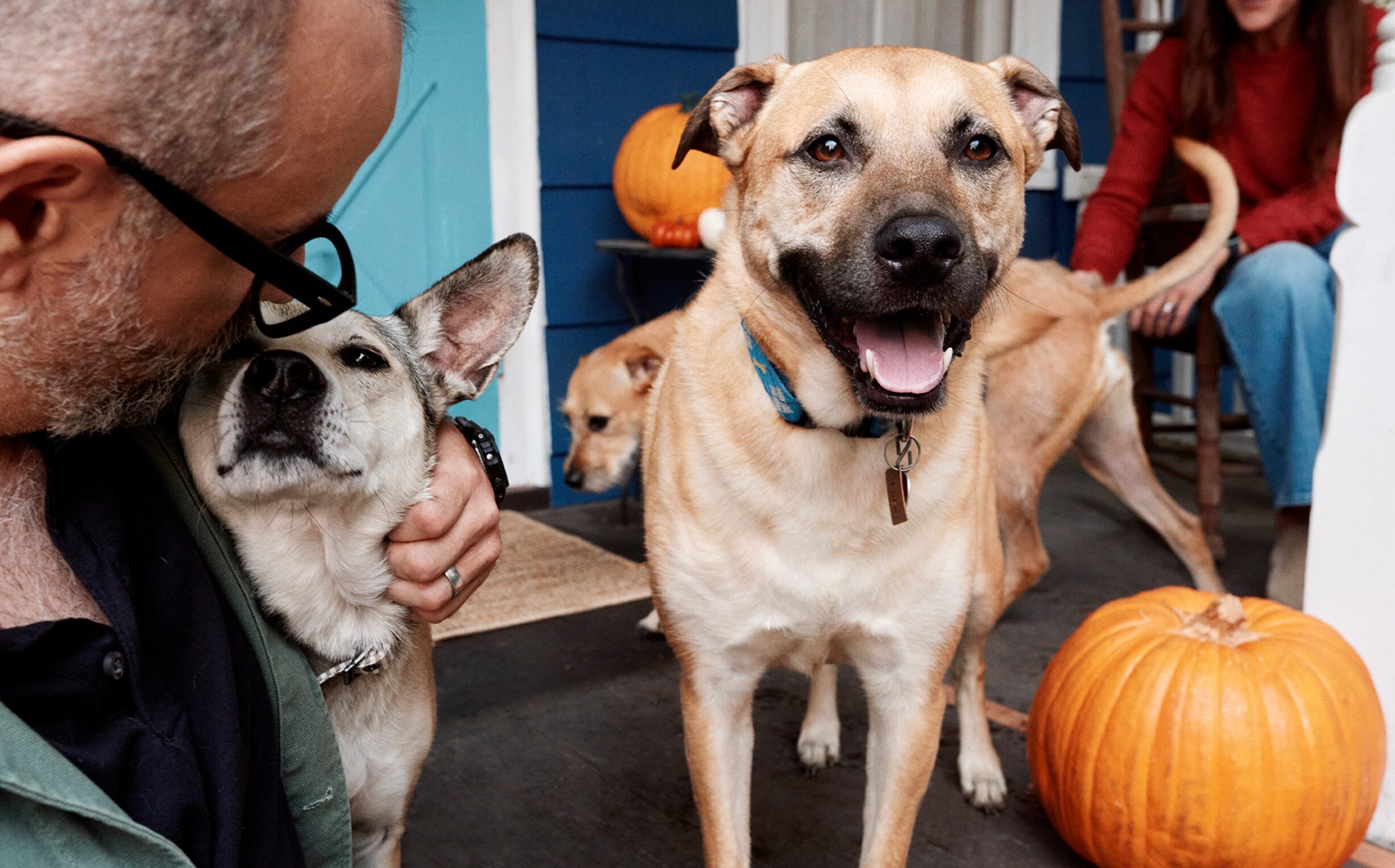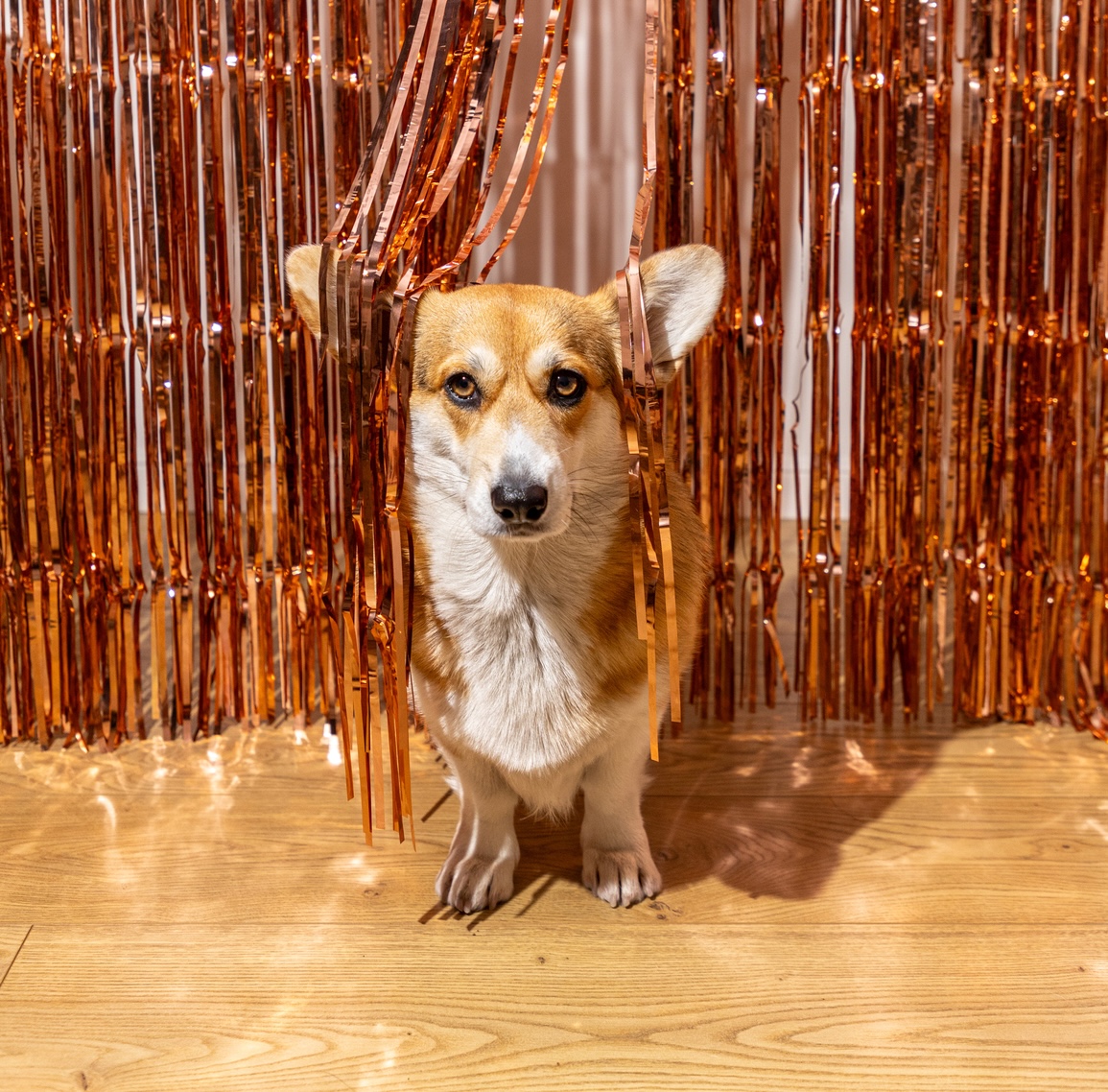In this article:
- Why is the “place” cue so useful for dogs?
- When should I start teaching my dog “place’?
- What supplies do I need for “place” training?
- What are the “Three D’s” when training?
- Troubleshooting common “place” training challenges
The “place” cue is basic, but super versatile. It seems simple—your dog learns to go to a spot and stay there until released—but it takes time and commitment to learn. Still, it’s worth it: “place” is incredibly useful in all kinds of situations, from when you answer the door (and need your dog not to rush your guest) to when you dine at an outdoor cafe (and need your dog to settle into leisure mode). Here’s the step-by-step guide to making it happen.
Why is the “place” cue so useful for dogs?
Teaching your dog “place” can create structure and calm in otherwise stimulating situations. Kate Naito, a certified dog trainer based in Connecticut, rattled off many of the purposes for which she finds the cue most useful. The first is door management—keeping your dog from crowding guests or delivery people. She says “place” is great for discouraging begging during mealtimes. She suggests you use it in the kitchen to keep dogs from being underfoot while you handle hot, sharp, or delicious things. And when you’re out and about, maybe at a restaurant or in the park, to settle a pup.
When should I start teaching my dog “place”?
The “place” cue can be taught to dogs of any age, but it’s particularly beneficial for puppies who are learning basic household manners, dogs who get overly excited when visitors come a-knocking, and any dog who needs help settling down in stimulating environments.
Do I need any supplies to teach “place”?
You need minimal equipment to get started. Two things are useful: a place for your dog to aim for and high-value treats to reward them for a job well done.
“‘Place’ is basically a butt target,” Naito explains. “You do need something for the dog to target—it could be a certain spot on the rug, or it could even be a washcloth.” The target should be something portable if you plan to use the command in different locations.
The target, then, can be many things, per Naito. For example: a mat, a towel, their bed, a yoga mat, or a blanket. Naito likes bath mats because they’re small and have a grippy bottom.
The “Three D’s”: Duration, distance, and distraction
Professional trainers use the “Three D’s” framework to build reliable behaviors: duration, distance, and distraction. This systematic approach ensures that your dog truly understands a skill before you ask them to use it in challenging real-world situations.
A note on adding the release word
A release cue—like “okay,” “free,” “release,” or “break”—is crucial to use in tandem with “place,” Naito said. When you use a release word, your dog learns they must wait for permission to move. This creates clear expectations. It also prevents the dog from wandering away when they get bored. Choose one word, and use it consistently. Always use the release word enthusiastically, and allow your dog to move freely after hearing it.
Start with duration
Start with duration training in a quiet, low-distraction environment. “Usually we start with duration, where we lure the dog to their place and give a certain number of seconds in between treats,” Naito says.
The process:
- Lure your dog onto their “place” mat with a treat.
- Once all four paws touch the mat, say the cue word (“place”) and give the treat.
- Count to 5 seconds, say “place,” and give another treat if they stay there.
- Repeat until your dog comfortably stays for 5 seconds between treats
- Gradually increase to 6 seconds, then 7, and so on.
- Build up to longer durations as your dog succeeds.
- Don’t forget to release your dog with your chosen release word (like “okay” or “free”).
As your dog gets better at this skill, reduce the luring motion and work with just the word “place.”
Now add distance
Once your dog reliably stays in their place for extended periods, add distance. There are two ways to add distance, Naito said. There’s “sending distance,” or teaching your dog to go to their place without you escorting them there. And there’s “handler distance,” or your ability to move away from your dog while they remain in place.
“I want to be able to send my dog to his place without me escorting him all the way there—[so] he can take himself there so that I don’t have to stop cooking or whatever,” explains Naito. And handler distance allows you to answer the door, tend to cooking, or handle other tasks while your dog stays settled.
The process:
- Stand one step away from the mat and say “place.”
- If your dog goes to the mat independently, mark and reward enthusiastically.
- Once your dog is on place, practice stepping away and returning to treat.
- Gradually increase your distance from the mat.
Distract, distract, distract
When you practice “place,” you can increasingly do normal activities that might tempt your dog to break the stay. This includes things like moving around the kitchen while cooking, checking your phone (and therefore breaking eye contact), having conversations with others in the room, and introducing interesting smells like food.
This way, you begin building distractions into the training from the get-go. Even when you are only asking your dog to hold place for five seconds between giving them treats, you can be distracting in those five seconds.
“When I’m counting to five in my head, I’m kind of shuffling around the space and checking my phone for five seconds,” Naito notes about testing her dog’s focus during distraction training. This is all to say that, if your dog can handle it, you can build distraction and duration at the same time.
Some common ways to add distraction, listed in increasing order of what’s generally most distracting to dogs:
- Practice “place” while you do light kitchen activities or mealtime prep.
- Have family members walk by while your dog is in their place.
- Test “place” in different rooms of your house.
- Go outside. Practice on a quiet street. With your dog leashed, place a washcloth on a sidewalk or in an enclosed area and cue “place.”
- Practice on a busy street. While the garbage truck goes by. While skateboards go by. While other dogs go by, etcetera. (Always do this safely, of course—with a leash.)
Teaching “place” while outside is the big leagues. Make sure your dog has indoor “place” down first. When you do practice outside, BYOBT (bring your own butt target).
“I’ll bring their little ‘place’ mat with them so they have a spot where they already know how to go there and stay there for a while,” Naito said. The familiar mat provides clarity about expectations in a new environment.
Troubleshooting common “place” training challenges
The restless dog
Some dogs, especially puppies or high-energy breeds, struggle with staying still. “There are some dogs that might have ants in their pants because they’re puppies or they just have a lot of energy. In [those cases], we keep the durations very short to start with,” Naito advises.
For these, you can start with food puzzle toys on the mat. Say “go to place” and have a lick mat or something else intriguing there. “You’re not even doing any official duration, but you’re organically building duration because the dog stays on his place and licks the peanut butter off of a licking mat,” she said.
The fearful or hesitant dog
If your dog seems nervous about the mat itself, slow down the process:
- Leave the mat out for a few days without any training.
- Feed meals near (not on) the mat.
- Toss treats around and occasionally onto the mat.
- Only ask for one or two paws on the mat initially.
The dog who just won’t stay
If your dog keeps getting up, you may be progressing too quickly—go back to shorter durations. You can also use higher-value treats.
Place training is wildly useful in day-to-day life, for dogs’ safety as well as their ability to settle around distraction. While training, remember to take your time and celebrate small victories (like being able to chop onions in the kitchen while your dog sits contentedly on their favorite washcloth).
Want more step-by-step training guides?
- Teach Your Dog to Sit
- Teach Your Dog to Wait
- Teach Your Dog Recall
- Teach Your Dog to “Leave It”
- Teach Your Dog to “Drop It”




